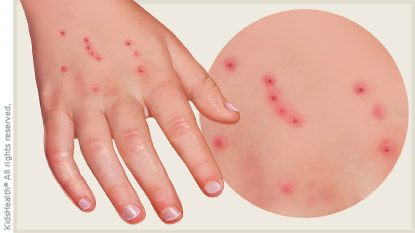- Home
- Parents Home
- Allergy Center
- Asthma Center
- Cancer Center
- Diabetes Center
- A to Z Dictionary
- Emotions & Behavior
- First Aid & Safety
- Food Allergy Center
- General Health
- Growth & Development
- Flu Center
- Heart Health
- Homework Help Center
- Infections
- Diseases & Conditions
- Nutrition & Fitness Center
- Play & Learn Center
- School & Family Life
- Pregnancy Center
- Newborn Center
- Q&A
- Recipes
- Sports Medicine Center
- Doctors & Hospitals
- Videos
- Para Padres
- Home
- Kids Home
- Asthma Center
- Cancer Center
- Movies & More
- Diabetes Center
- Getting Help
- Feelings
- Puberty & Growing Up
- Health Problems of Grown-Ups
- Health Problems
- Homework Center
- How the Body Works
- Illnesses & Injuries
- Nutrition & Fitness Center
- Recipes & Cooking
- Staying Healthy
- Stay Safe Center
- Relax & Unwind Center
- Q&A
- Heart Center
- Videos
- Staying Safe
- Kids' Medical Dictionary
- Para Niños
- Home
- Teens Home
- Asthma Center
- Be Your Best Self Center
- Cancer Center
- Diabetes Center
- Diseases & Conditions
- Drugs & Alcohol
- Expert Answers (Q&A)
- Flu Center
- Homework Help Center
- Infections
- Managing Your Medical Care
- Managing Your Weight
- Nutrition & Fitness Center
- Recipes
- Safety & First Aid
- School & Work
- Sexual Health
- Sports Center
- Stress & Coping Center
- Videos
- Your Body
- Your Mind
- Para Adolescentes
Bedbugs
What Are Bedbugs?
Bedbugs are small, flat, reddish-brown bugs about the size of an apple seed. They can be found all over the world. Bedbugs hide during the day in or around beds and crevices in chairs, couches, curtains, rugs, dressers, and even in cracks of walls and floors and behind wallpaper.
They come out at night to find food, feeding on human and animal blood. After their blood meal, bedbugs don't stay on a person or animal for long. Instead, they hide nearby, often in clothing or luggage, allowing them to spread when belongings move to another location.
What Are the Signs of Bedbugs?
A person does not usually feel the actual bedbug bite. Afterward, the bite will feel itchy. Bedbug bites look like little red bumps (similar to mosquito bites) and they can sometimes happen in a line on the body. The bites are mainly on areas of skin that are exposed while sleeping.
Bedbugs are a nuisance, but they don't spread germs or diseases.

How Do People Get Bedbugs?
Some people think that a dirty room will bring bedbugs, but this isn't true. Bedbugs can live anywhere if they have food. If a room is cluttered, it helps them to hide. But clutter itself won't attract them.
Bedbugs are commonly seen in places that have a high guest turnover, such as hotels, hospitals, or nursing homes. But they can be found in many other places, such as on public transportation, in apartment buildings, and in dorms. They travel from place to place on clothing, furniture, and luggage.
How Do I Know if It's Bedbugs?
Bedbug bites can look similar to other bug bites, like mosquito bites or chigger bites.
To know it's bedbugs, it's important to find the bugs themselves. Look at bedsheets and mattresses for little spots of blood, rusty-looking stains (crushed bugs), or black dots (bugs' poop). You might see live bugs around the seams or tags of mattresses and box springs, or in cracks of bed frames and other furniture. They can even hide in books, carpet edges, and electrical outlets.
How Are Bedbug Bites Treated?
If you think you've been bitten by a bedbug, wash the bites with soap and water. Calamine lotion, an anti-itch cream, or cool compresses can help with the itching. In some cases, an antihistamine by mouth can ease itching. Bites clear up in 1–2 weeks.
Don't scratch a bedbug bite. Doing so can cause a skin infection, such as impetigo and, rarely, cellulitis. If an infection does happen, a doctor will prescribe antibiotics to treat it.
How Can I Prevent Bringing Bedbugs Into My Home?
If your home has bedbugs, don't feel bad. Bedbug infestations are common. They can come into your home on furniture, bedding, luggage, boxes, or clothing.
To help prevent bedbugs in your home:
- Check secondhand furniture for signs of bedbugs before bringing it home.
- Cover your mattress and box spring with a plastic protective cover.
- Reduce clutter in your home and vacuum often.
To help prevent bedbugs from traveling:
- Check mattresses and headboards for signs of bedbugs.
- Put luggage on the dresser or table rather than the floor.
- Hang up clothing instead of putting in drawers.
- Check websites for bedbug infestation reports by city (and sometimes by hotel).
- Check your luggage for signs of bedbugs before bringing the luggage into your home. Unpack directly into the washing machine. Wash and dry your clothes on the hottest setting. If you can't wash your clothing right away, put it in a sealed plastic bag until you can wash it.

© 1995- The Nemours Foundation. KidsHealth® is a registered trademark of The Nemours Foundation. All rights reserved.
Images sourced by The Nemours Foundation and Getty Images.
